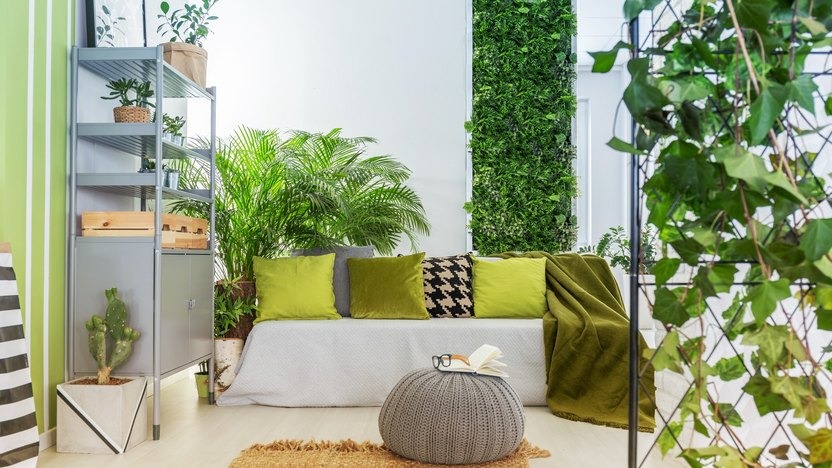In recent years, the concept of wellness has moved beyond the realm of personal health and fitness, spilling into the way we design and inhabit our spaces. Our living environments can greatly affect our mood, productivity, and overall well-being. Here’s a guide to creating healthier living spaces that promote wellness and harmony.
1. Maximize Natural Light
Benefits
Natural light can boost mood, enhance productivity, and regulate circadian rhythms. Access to sunlight encourages serotonin production, which can combat depression and anxiety.
Tips
- Use large windows or skylights: Opt for expansive windows or skylights to flood your home with light.
- Incorporate mirrors: Strategically placed mirrors can reflect natural light and brighten dark spaces.
- Choose light colors: Lighter paint colors can help to maximize the impact of natural light.
2. Incorporate Natural Elements
Benefits
Bringing the outdoors in can reduce stress and enhance mood. Natural materials and plants create a calming atmosphere, grounding us in nature.
Tips
- Add indoor plants: Incorporate a variety of houseplants for improved air quality and a dose of nature.
- Use natural materials: Opt for materials like wood, stone, and bamboo for furniture and decor. These elements create a warm, inviting atmosphere.
- Create green spaces: If possible, design outdoor areas that serve as retreats for relaxation and recreation.
3. Prioritize Air Quality
Benefits
Indoor air quality can directly impact health, contributing to allergies, respiratory issues, and fatigue. Fresh, clean air is essential for overall well-being.
Tips
- Ventilation: Ensure adequate ventilation by opening windows or using air purifiers to circulate and filter air effectively.
- Choose low-VOC products: When painting or buying furniture, opt for items labeled low in volatile organic compounds (VOCs) to reduce harmful toxins in the air.
- Regular maintenance: Keep HVAC systems clean and regularly change filters to promote good air quality.
4. Design for Movement and Activity
Benefits
Active spaces encourage physical activity, which is essential for maintaining a healthy lifestyle. Designing for movement can help integrate fitness into daily routines.
Tips
- Open layouts: Create spacious areas that encourage movement and flexibility, such as open floor plans for living and workout spaces.
- Incorporate exercise areas: Dedicate space for yoga or workout equipment to make exercise easily accessible.
- Encourage outdoor activity: Design outdoor areas that inspire physical activity, such as gardens, walking paths, or patios for outdoor exercises.
5. Utilize Sound and Acoustic Design
Benefits
Noise can significantly impact stress levels and overall wellness. Thoughtful acoustic design can help create a serene environment.
Tips
- Use sound-absorbing materials: Incorporate carpets, rugs, curtains, and acoustic panels to reduce noise levels.
- Create quiet zones: Design rooms intended for relaxation and focus, equipped with comfortable seating and calming decor.
- Nature sounds: Integrate features like water fountains or outdoor spaces that allow natural sounds to filter in, promoting a sense of tranquility.
6. Mindful Color Choices
Benefits
Color plays a powerful role in mood and behavior. Choosing the right colors can create a calming or invigorating atmosphere in your space.
Tips
- Cool colors for calmness: Consider soft blues, greens, or neutrals for areas meant for relaxation and restful activities.
- Accent with warm colors: Use warm shades like yellow or orange as accents to inspire energy and creativity in workspaces or play areas.
- Personalize your palette: Select colors that resonate with you personally, promoting a sense of belonging and comfort.
7. Embrace Minimalism and Clutter Control
Benefits
A cluttered environment can lead to feelings of overwhelm and distraction. A minimalistic approach can promote clarity and focus.
Tips
- Declutter regularly: Implement strategies for decluttering, like a designated ‘donate’ box and a regular schedule for sorting out items.
- Storage solutions: Use creative storage solutions to keep possessions organized and out of sight while maintaining easy access.
- Limit decor: Avoid excessive decor; choose meaningful items that contribute to the harmony of your space.
Creating a living space that promotes wellness doesn’t have to be daunting. By implementing these strategies, you can design an environment that nurtures your physical, mental, and emotional health. A healthier living space is an investment in your overall well-being, leading to a balanced and more fulfilling life. Embrace the journey of designing for wellness and enjoy the benefits that come with it!

